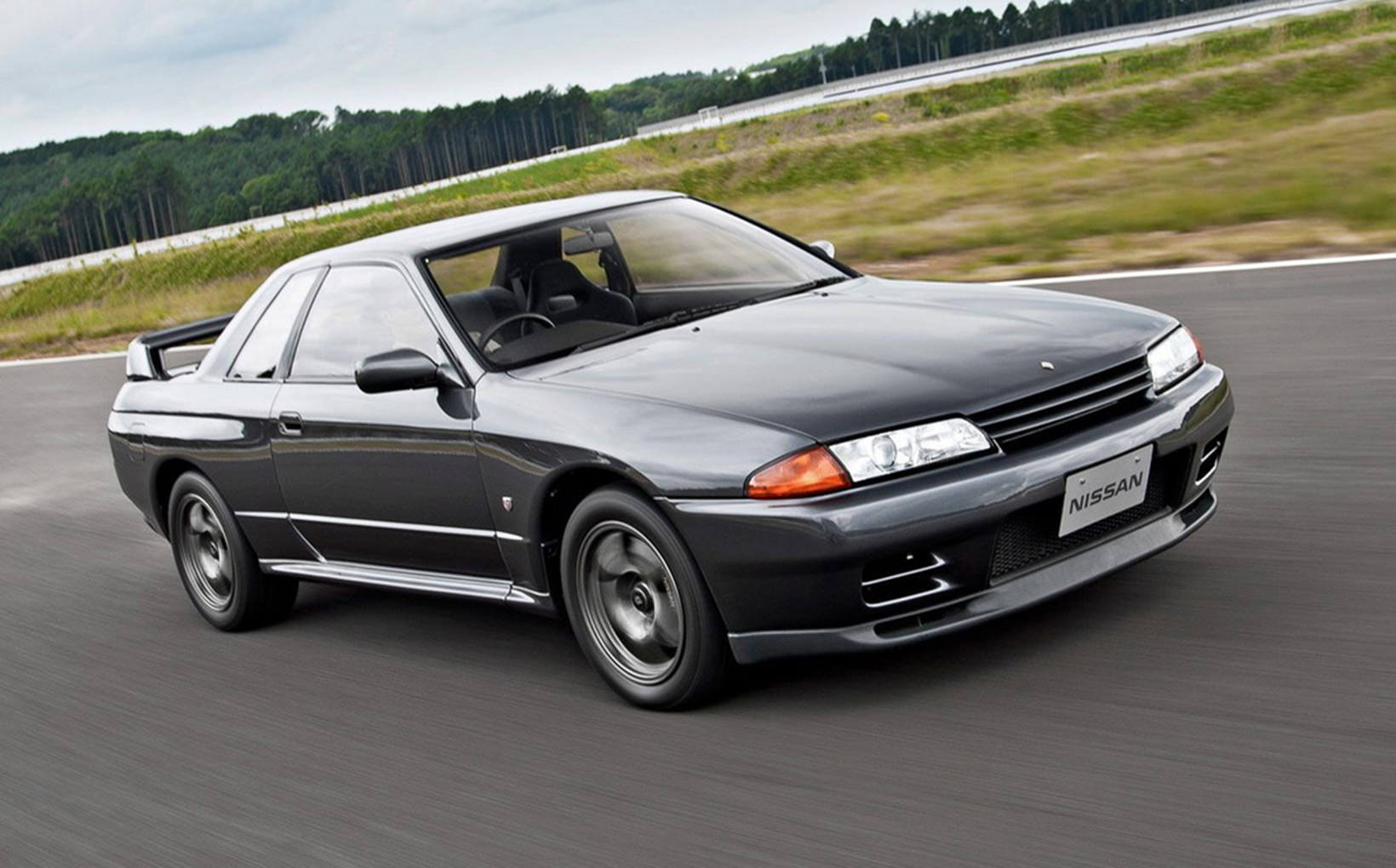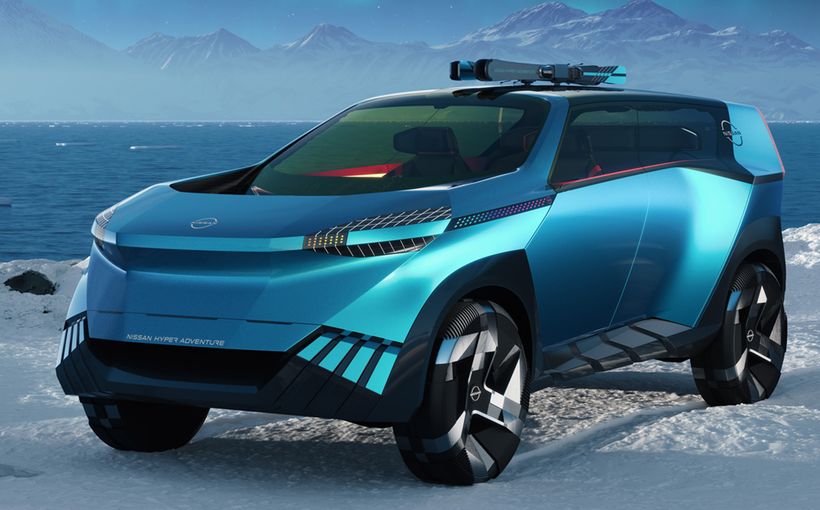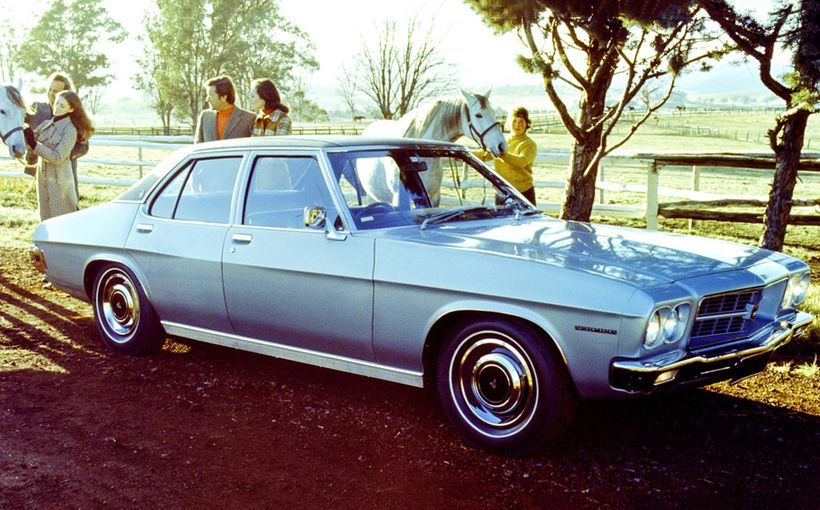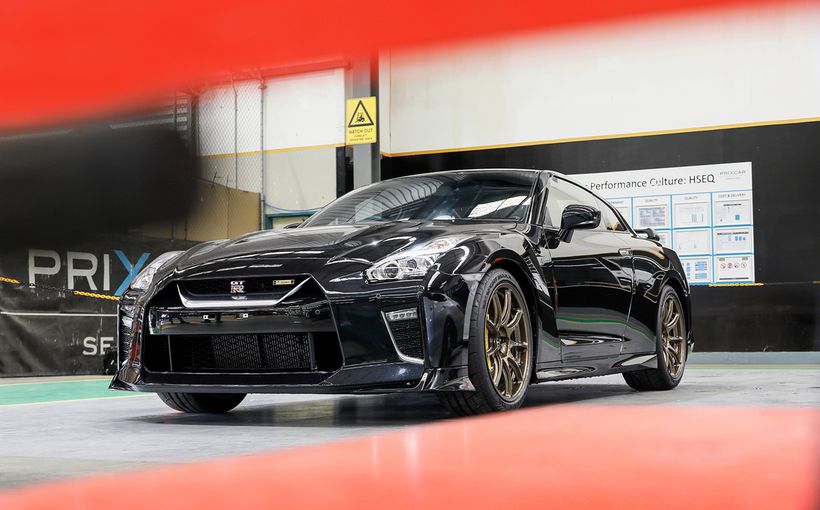Nissan GT-R: Japan’s unique all-rounder supercar

Judged for both its brilliance as a road car and its dominance in motorsport, the most important machine of the 1990s decade was the Nissan Skyline GT-R. I wrote the road car story of the GT-R in the Classic Garage series, while Mark Oastler covered the Nissan’s fantastic success on the racetracks of the world. And on Shannons Club TV we brought these histories together. In the decade that gave us the BMW E36 M3 and the Subaru Impreza WRX the GT-R comes out ahead of them because of its great success on both road and track. It could be said that few cars in history have covered themselves in this kind of glory and the GT-R’s reputation is further enhanced by the fact that it made its debut in the final year of the 1980s. Just think: twin-turbocharged 24-valve DOHC in-line six with 209kW at 6800rpm; variable torque split all-wheel drive, all-wheel steering, anti-lock braking, plenty of aluminium panels, and it was only 1989!

Image: https://en.wheelsage.org/
The GT-R – always the ‘Skyline GT-R’ until the advent of the fifth generation in 2007 – has been Nissan’s hero car since its debut. No other Japanese maker and very few Europeans have built such a tradition. The remarkable abilities and reputation of the GT-R are seeded deep in Japanese automotive history. They owe their existence to the small Prince Motor Company with which Nissan merged in 1966 under a Japanese national industry policy which encouraged mergers to build the strength of the indigenous automotive industry.
Wisely, senior management left the Prince engineers quite a free hand to continue to develop flagship high performance products to be sold as Nissans but, for many years, marketed through separate dealerships: if you wanted to buy a Skyline, you had to go to a Nissan Prince dealer.
Even more than half a century after the Nissan-Prince merger, the brand values of the smaller manufacturer not only survive intact and enhanced but are responsible for the world-beating Nissan GT-R.
Of course, Nissan as a global giant has benefitted in assorted ways from this legacy with its Z-Cars probably the leading exemplars.
Arguably, only Honda among the Japanese manufacturers has come close to producing a sports car of the GT-R’s ability with its NSX. There has never been a Toyota, Mitsubishi or Subaru to keep the Skyline GT-R company. And there has been great depth to the Nissan tradition of sports car; while the GT-R has long been the hero, the Z has generally been an outstanding sports car at a more affordable price.

Image: https://en.wheelsage.org/
The GT-R moniker made its debut in 1969 but half a decade earlier the Prince Skyline GT was developed from the humble four-cylinder Skyline sedan with the purpose of winning the Japanese Grand Prix. The GT got a much-lengthened (eight inches) frontal section which provided space for the SOHC 2.0-litre six-cylinder Gloria engine.
The production Skyline GT was essentially a road-legal variant of the race car.
Especially tuned for the GT and equipped with triple Webers, the Prince six gave 127 brake horsepower. The Skyline GT narrowly missed its appointment with destiny as winner of the 1964 Japanese Grand Prix. The victor was a Porsche 904 but Skylines filled the next five places!
The Skyline GT was available in small numbers in Australia and one of a pair entered placed fourth in the 1965 Sandown Six-Hour Race. It may have lacked the grace of an Alfa Giulia or Triumph 2000, but it sure impressed me as a 15-year-old at Sandown that day! There was even something muscular and individual about its long-bonnet/short-tail demeanour in that exciting era of the Ford Mustang!

Image: https://en.wheelsage.org/
But it was another, much later model Skyline that brought Prince engineering heritage to a much greater number of local customers. Ironically, this car not only lost the Prince branding in the local context but was not even a ‘Skyline’; you’ve guessed it, this was the Datsun 240K. Of course, there was plenty of Nissan engineered into the 240K, including the SOHC six from the 240Z and 240C, but in its brand values and driving dynamics, this may be seen as the true successor to the 1964 Prince Skyline GT.

Image: https://en.wheelsage.org/
Between the 1964 Skyline GT and the 240K lay another generation of Skyline, produced from 1969 to 1972 after making its debut at the Tokyo Motor Show in October 1968. The ‘Hakosuka’ Skyline GT-R was originally available solely in four-door sedan guise through Nissan-Prince Stores. The two-door variant came later but total sales were low at just 1955 units.
Then came the shape familiar to Australians as the two-door 240K. Just 197 (‘Kenmeri’ – said to be thus dubbed after Ken and Mary in the advertisements!) GT-Rs were produced from September 1972 until March 1973, thanks largely to the impact of the first global oil shock. But it was easy to gauge how special the GT-R variant was because its asking price was almost double that of a standard six-cylinder Skyline. It used the same engine as its predecessor, running through a five-speed manual transmission.
Unsurprisingly, the Skyline GT-R sub-brand was retired from battle until the arrival of the R32 in 1989.

Image: https://en.wheelsage.org/
Although there was no GT-R offered during the model run of the R31 Skyline (1985-87), much progress was made towards a relaunch. Indeed, the year before the R31 made its debut, Nissan regrouped its motorsport activites under the heading NISMO (NISsan MOtorsport).
Premium versions of the R31 Skyline were equipped with Nissan’s new all-wheel steering system, known uncharismatically as HICAS (High Capacity Actively Controlled Steering).
A forerunner of the R32 GT-R arrived towards the end of 1987. This was the GTS-R coupe, of which 823 examples were produced to homologate the car for Group A Touring Car racing. Gibson Motor Sport prepared a GTS-R for Jim Richards and Mark Skaife to race in the 1989 Sandown 500. They won. The following year, Jim Richards won the ATCC in the HR31 GTS-R and the new R32 GT-R.

Image: https://en.wheelsage.org/
While the hottest R31 was indeed a forerunner, it hardly prepared anyone for the purpose-built nature of the R32 Skyline GT-R. In some respects, Nissan’s approach with the new model reflected BMWs some years previously in developing the E30 M3. From day one, the GT-R was designed to meet all present and foreseeable Group A rules.
Its huge guards were designed to accommodate correspondingly impressive rims and rubber. The adoption of the ATESSA (Advanced Total Traction Engineering System) all-wheel drive configuration added about 100kg worth of avoirdupois, but the engineers compensated by taking the engine capacity to 2.6 litres and using aluminium for some of the panels. Turbocharged, this enlarged unit was good for a formidable 599 brake horsepower in race trim.
As for the all-wheel-drive element, the R32 was designed essentially as a rear-driver with added front-drive, while most 4WD/AWD cars are the reverse.
The R32 was the first Skyline GT-R to be sold in Australia and ours was the only export market officially to receive any GT-R until 2008 when the still-current R35 was introduced. Indeed, it was not until after Godzilla had succeeded in racing that Nissan Australia offered a run of 100 cars in two batches of 50, priced at $110K. The fact that just 63 of these were sold as brand new vehicles as opposed to drastically discounted demonstrators or ‘used’ cars does not reflect on the machine itself or even the price being asked for it: the Nissan brand failed to carry the kind of prestige required to get anyone less than an out-and-out devotee to spend that sum of money to buy one. Imagine if it had been a front-engined Porsche, a kind of super 968!
And, of course, in many respects, the GT-R was at least the equal of a 911 and may be said to have been in part inspired by the all-wheel-drive 959. There was even in those days a degree of controversy about manufacturers’ claimed lap times of the Nürburgring Nordschleife, but it hardly stretched credibility when Nissan claimed that Japanese driver Hiroyoshi Katoh knocked 25 seconds off the production lap record held by a Porsche 944 when he stopped the watch at 8:20.

Image: https://en.wheelsage.org/
Arguably, the R32 Skyline GT-R was an even more successful homologation special than the E30 BMW M3 because it was the Nissan’s indomitability that essentially spelled the end of international Group A racing. If the BMW represented a triumph of building within the rules and retaining the small-is-beautiful principle, the GT-R pushed at every boundary. Too heavy? Move up to the next engine class. Limits to traction? Equip the machine with drive to all four wheels. And so on.
With the redoubtable pairing of Jim Richards and Mark Skaife, the R32 GT-R won the 1991 Bathurst 1000 and the rain-shortened ‘pack of arseholes’ 1992 event. Arguably, it was the invincibility of the all-wheel-drive turbo Nissan that inspired the change to V8 Supercars for season 1993.
In Australia, the GT-R was dubbed ‘Godzilla’ by then Wheels editor Phil Scott. The name has stuck internationally ever since. But even before Scotty came up with this fitting name, in Japan the R32 was already known as Obakemono (The Monster); he just took the next clever step! It was on the cover of the July 1989 edition, billed as:
SKYLINE SUPERCAR! Nissan’s new Godzilla on wheels aims to slay the Sierra. And it’s here soon.
More than three years in advance of BMW’s second-generation (E36) M3, it was a second quicker through the 400 metres at 13.9 seconds. It was almost unbelievable – quicker and better built than the Ferrari 328, two-thirds the price of a Porsche 911.
Rally champion Ed Ordynski compared the GT-R (before its Australian release) with a Porsche 911 GT2 ($447,500) and FPV F6 (astonishingly, just $66,590!) for the November 2008 edition of Wheels. His personal choice was the Porsche but he said: ‘I do respect the numbers backing up the GT-R’s victory.’
The R32 Godzilla GT-R’s triumphant career in international motor racing has been comprehensively covered by Mark Oastler and, of course, that success underwrote the way the road car has been perceived ever since by the automotive cognoscenti everywhere.

Image: https://en.wheelsage.org/
In February 1990 came the GT-R Nismo Group A homologation special. It shed weight, thanks mainly to a new and even lighter aluminium bonnet and front bumpers. Five hundred and sixty were produced. There was no ABS per Group A regulations. Air flow and downforce were improved. The brake rotors were cross-drilled. Larger Garrett T04B turbochargers replaced the standard car’s T03s. The rear wiper was removed to save some tiny amount of weight.
In July 1991 Nissan introduced an N1 variant designed for domestic Japanese racing. Essentially, this was a stripped-out lightweight version of the GT-R Nismo. There was no air-conditioning, no sound system. The boot carpet had been removed. Even the paint weighed less, thanks to a thinner coat. All N1s were painted Crystal White. Improved brake cooling and a reinforced brake master cylinder were evidence of the car’s purpose-built nature.
To celebrate the GT-R’s success in both Group N and Group A racing, Nissan released the GT-R V-Spec – yes, Victory SPECification – in February 1993. An N1 variant was also offered. All V-Specs had 17-inch BBS wheels with 245/45R17 rubber. A year later came the V-Spec II with the sole change being wider 245/45R17 tyres.
With hindsight, it seems passing strange that the R33 and R34 were never exported (although tiny numbers of V-Spec variants were sent to some right-hand-drive markets like the UK, New Zealand and Singapore); perhaps Nissan management was discouraged by the Australian experience. Essentially, both were further revisions of the brilliant R32 formula.

Image: https://en.wheelsage.org/
The R33 Skyline GT-R prototype was on display at the 1993 Tokyo Motor Show. Beneath the new styling, mechanical changes were mostly minor. Stronger synchromesh in the gearbox and an upgraded oil pump drive enhanced durability. Sales began in January 1995. A V-Spec variant was offered with upgraded (and further lowered) suspension and a new ‘Active’ limited slip differential. R33 production ended in November 1998.
The most celebrated R33, released on 3 November 1997, was the 400R (for Racing). It was developed by NISMO. The bored and stroked engine was elaborately upgraded and made 298kW, giving a top speed of 300km/h with zero to 100 in 4.1 seconds. There were extensive aerodynamic refinements and the redesigned bonnet and rear spoiler were of carbonfibre. Massive NISMO 18X 10 wheels were fitted. Just 44 of a planned 100 were built.

Image: https://en.wheelsage.org/
The shorter R34 (1999-2002) was essentially more (less?) of the same formula. A highlight was the export of 80 especially equipped V-Spec variants to the UK. These were trimmed in Connolly hide.
The final variant of the R34 GT-R was the V-Spec II Nür with an upgraded N1 race engine, of which 1003 were built. This amounted to a somewhat belated acknowledgement of the fact that Nissan’s engineers had honed the R32 GT-R at the famous German circuit.
If it hadn’t been for the genius and vision of then Nissan boss Carlos Ghosn, it seems unlikely that Nissan would ever have reimagined the GT-R. Ghosn told Michael Stahl of Wheels (January 2008):
When I arrived in Japan in 1999 our company was struggling. Our product line-up, particularly in Japan, was made of 40 different cars…only three of them were profitable. One of the three was the GT-R – and it was the most profitable, in terms of operating margin.
I told the engineers, ‘I don’t care when you will be coming with the next car, but I want it to be very strong. If it takes three years, four years, that’s not the issue. But the day that we come with GT-R, it’s gonna have to wow everybody.’

Image: https://en.wheelsage.org/
The R35 Nissan GT-R, which made its debut at the 2007 Tokyo Motor Show and went on sale in 2008, no longer carried the Skyline sub-brand. It was a stand-along, pure-bred supercar.
Chief designer Hiroshi Hasegawa said of his design;
This is the first time GT-R is not based on a Skyline coupe or sedan. I could start the car from scratch which gave me more freedom. The performance of the car is aggressive, so the face should be as well.
Gone was the famous in-line six of the earlier models, replaced by a compact and lighter 3.8-litre V6 with such joys as magnesium camshaft covers and titanium inlet and exhaust valves and conrods. Each engine is hand-built by one of just four artisans.
This car pioneered a rear transaxle in an all-wheel-drive car; Nissan acquired the patent.
The heavy all-wheel steering system was gone. Kazutoshi Mizuno, who was chief engineer of the R35 GT-R, said bluntly: ‘no racing car has 4WS.’

Image: https://en.wheelsage.org/
Purists might lament the lack of a traditional manual transmission but the six-speed dual clutch gearbox developed in-house at Nissan was among the world’s best transmissions. Stahl wrote:
If there’s one element that defines [chief engineer]Mizuno’s goal for balance, it’s … the transmission. It can’t help but stand out. In automatic mode, the three-position switch allows Snow, Normal and ‘R’ settings; in manual (with shifting available only via the paddles), one can opt for Normal or ‘R’. The automatic program is probably the most intuitive I’ve experienced, with vigorous driving uncovering its gear-holding, throttle-blipping talents and impressively rapid shifts.
Impressive, at least, until one flicks the ‘R’ switch – unleashing an utterly soul-stirring slap-fest through the six cogs. And one suddenly realises a little more of the magic of the GT-R, beyond even the solidity of its stance and the stealth of its swiftness: this supercar doesn’t even pause for breath.
The R35 has steadily evolved, passing through two minor facelifts for 2011 and 2017. Peak power has increased from 358kW at 6400rpm to 421 at 6800. Naturally, there have been numerous special editions, including the Spec V (2009, carbonfibre trim, no rear seats) and, more importantly the NISMO.
Introduced in November 2013 at the Tokyo Motor Show as the fastest production car around the Nürburgring (7:08.679), the NISMO boasted 441kW at 6800rpm and a zero to 100 time of 2.6 seconds. It was equipped with special 20-inch alloys and the standard edition’s aluminium boot lid was replaced with a carbonfibre item. The NISMO aerodynamic package included a large racing-style carbon rear wing.
Astonishingly, the engineers and designers responsible for the new-generation GT-R took the concept that was almost overwhelming in 1989 and reimagined it. There is even a case to be argued that the R35 was more radical in the 2007 context than its predecessor had been 18 years earlier. In most respects, the R35 GT-R was not a cutprice alternative to a Porsche 911, but the equal of a 911 Turbo at half the price!
When the GT-R went on sale locally in early 2010, there was the ‘standard’ version at $155,800 and the Premium for $159,800. The entry level 911 Carrera was $224,700 while the Turbo opened the bidding at $361,100.

Image: https://en.wheelsage.org/
Making its debut at the 2019 New York Motor Show was perhaps the ultimate and final version of the GT-R – cash-strapped Nissan may not be able to invest in a new-generation car. This variant is the awesome model year 2020 GT-R NISMO. Alcantara and carbon highlights add some needed flair to an interior that won’t send any Aston Martin designer back to the drawing board. Writing in the January 2021 edition of EVO, Stuart Gallagher puts it like this:
It's not a sophisticated noise when you pull the aluminium door closed. The combination of Nismo’s lighter-than-expected construction and dated fixtures and fittings will come as a shock to those used to Europe’s latest premium products…
Should you value tech and touchscreens over 441kW V6 motors and Dunlop tyres that have had their outer tread grooves removed to increase the contact patch area, you’ll probably get straight back out again. There is Apple CarPlay, but really that shouldn’t be your focus here.
But this has always been the case with the GT-R: you either get it or you don’t.

Image: https://en.wheelsage.org/
You pay a colossal premium for the NISMO – $143K more than the Track edition which for all but the hardest core driver is almost its equal. Perhaps the most tangible gain for the outlay is the turbochargers found in the GT3 racer. But there is certainly a case to be made to spend $235K rather than $378 and forego that NISMO exclusivity: after all, closing on $400K the competition does get tougher!
Which leads me to the conclusion that if there has ever been any such thing as an all-rounder supercar, the R35 GT-R is certainly it.
When you consider that conversation between front occupants does not entail raising voices even at 300km/h, that two children can be comfortably accommodated in the rear and that the boot has space for two golf bags, the brilliant flexibility of Japan’s greatest ever supercar is abundantly apparent. The R35 GT-R is not a compromise choice, but the car you may buy with both heart and head in accord over a Porsche, Aston Martin or Ferrari. (And how many millions will some investor pay in 20 years time to buy a 2021 GT-R NISMO?)










